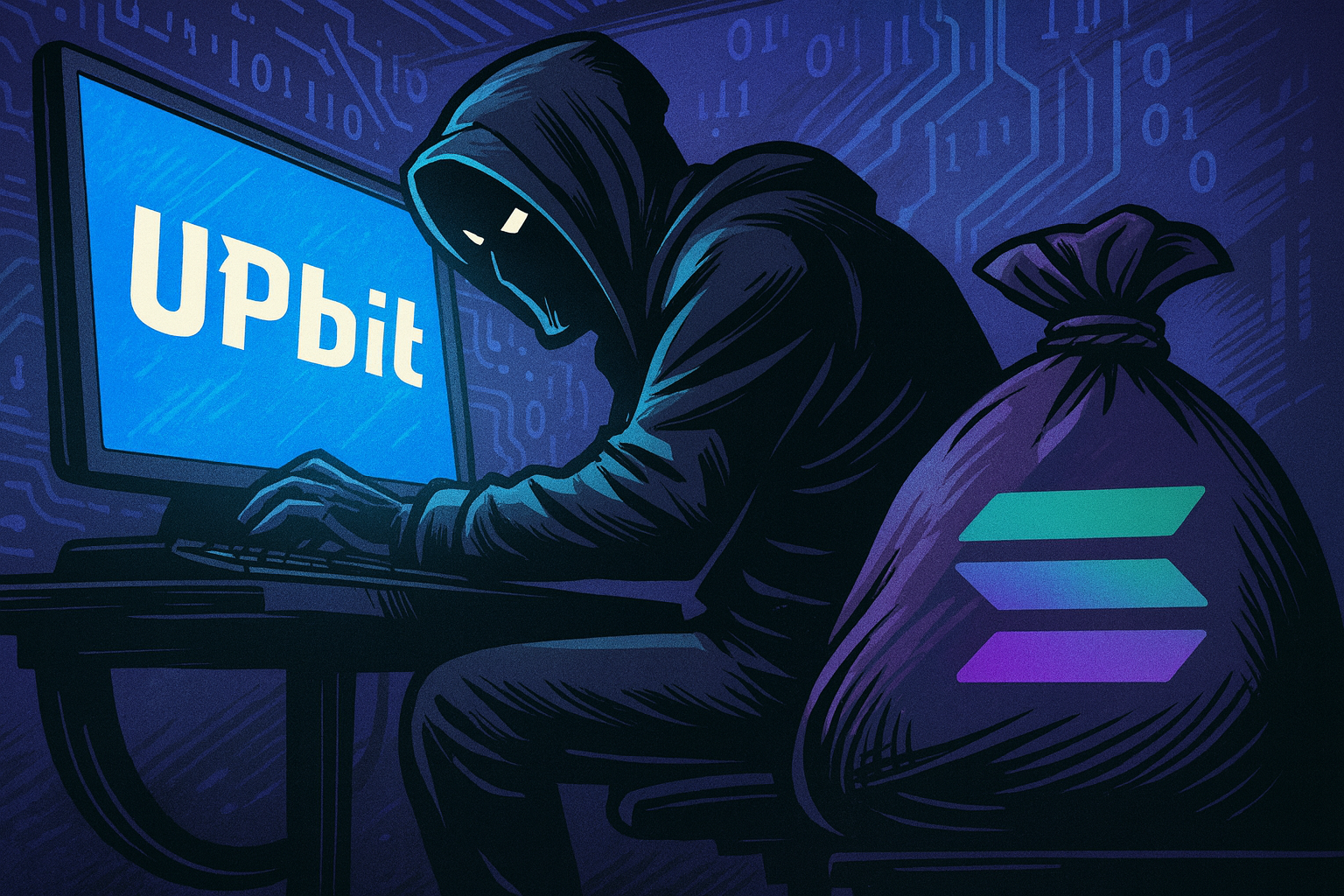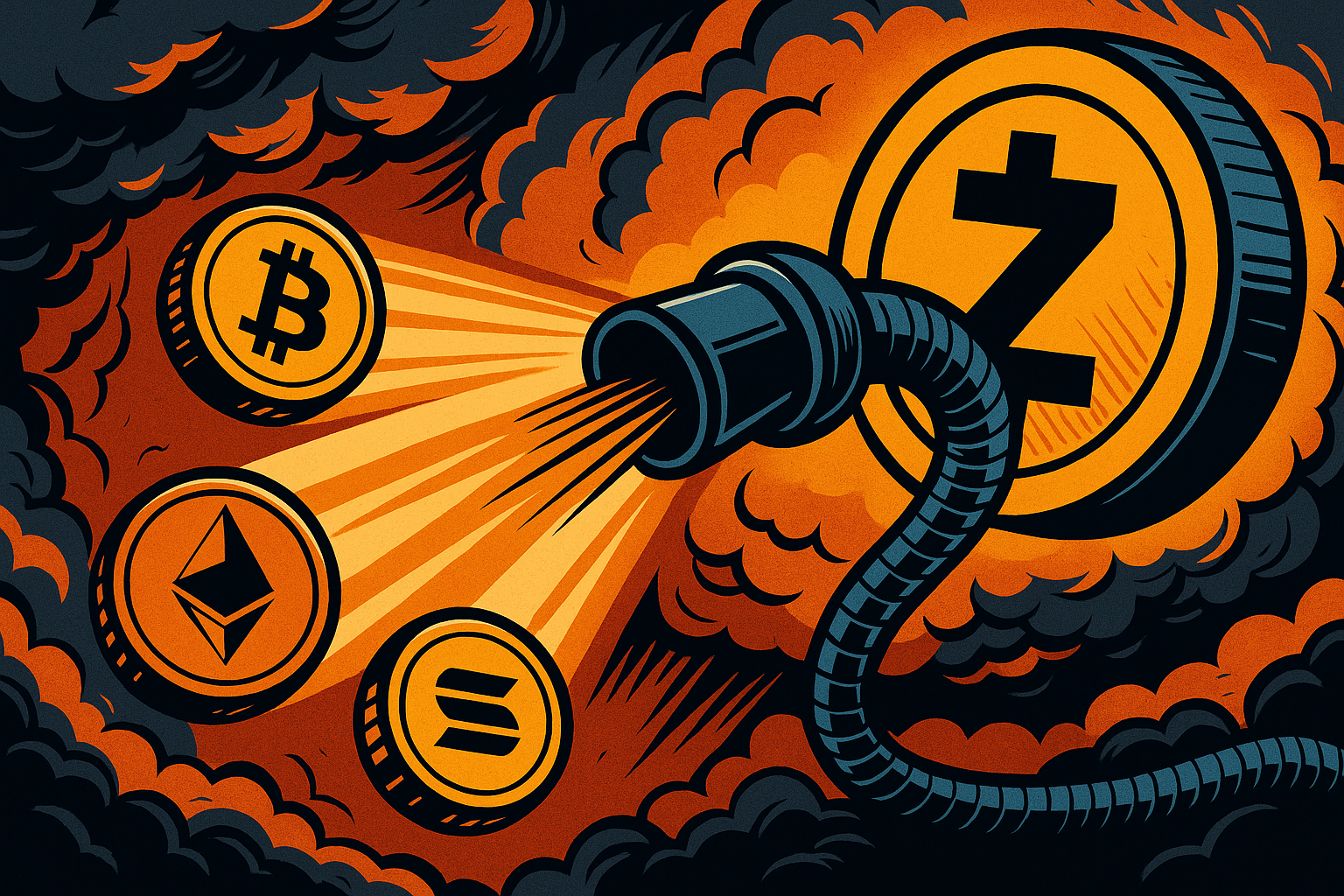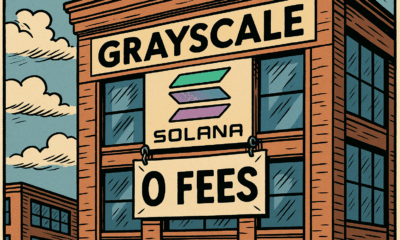News
Upbit’s $36M Solana Hack: A Security Wake-Up Call for 2025

- Share
- Tweet /data/web/virtuals/383272/virtual/www/domains/theunhashed.com/wp-content/plugins/mvp-social-buttons/mvp-social-buttons.php on line 63
https://theunhashed.com/wp-content/uploads/2025/11/upbit-1000x600.png&description=Upbit’s $36M Solana Hack: A Security Wake-Up Call for 2025', 'pinterestShare', 'width=750,height=350'); return false;" title="Pin This Post">
Major Breach Hits South Korea’s Largest Exchange
In a troubling echo of past crypto exchange breaches, Upbit — South Korea’s largest digital asset platform — confirmed on November 27, 2025, that it had suffered a substantial security compromise involving assets on the Solana blockchain. Approximately 54 billion Korean won, equivalent to $36 to $37 million, was drained from the exchange’s Solana hot wallets in a series of unauthorized transactions. The stolen assets encompassed not just Solana’s native token (SOL) but also a broad swath of ecosystem tokens, including USDC, BONK, JUP, RENDER, ORCA, PYTH, and RAY.
The breach represents one of the most significant Solana-related thefts of the year and reignites concerns over how centralized exchanges handle hot wallet infrastructure, particularly when interfacing with fast-moving, high-volume networks like Solana. These hot wallets — which remain online to enable real-time transactions — are more vulnerable to external threats, especially when not segmented or monitored rigorously.
A Swift Response — But Underlying Concerns Remain
Upbit’s operator, Dunamu, responded decisively. All deposits and withdrawals involving Solana-based assets were suspended immediately, hot wallet activity was halted, and funds were rapidly moved to cold storage to contain the damage. The company also assured users that the losses would be covered entirely from corporate reserves, guaranteeing that user balances would remain intact.
This decisive containment mirrors Upbit’s prior crisis response strategy. In November 2019, the exchange suffered a then-record loss of 342,000 ETH — valued at $50 million — in a breach later linked to the North Korean state-sponsored Lazarus Group. That attack set a precedent in South Korea’s regulatory landscape, leading to tighter oversight of exchange security protocols and the mandatory registration of exchanges under the Korean Financial Services Commission’s VASP regime in 2021.
The fact that this latest breach occurred on the very day Dunamu announced a high-profile partnership with internet giant Naver — aimed at expanding into global Web3 and AI sectors — further magnified its impact. The timing, whether coincidental or exploited, has raised eyebrows within the cybersecurity community.
Solana’s Speed vs. Security Trade-Off
This incident places renewed scrutiny on the Solana blockchain’s performance-centric architecture. Known for its high throughput and low-latency transaction environment, Solana has become a popular choice for decentralized finance (DeFi), gaming, and memecoin projects. However, its operational demands often push centralized exchanges to maintain large hot wallet balances for liquidity — increasing the potential attack surface.
As of Q3 2025, Solana remains the third-largest Layer 1 ecosystem by total value locked (TVL), trailing only Ethereum and BNB Chain. Its popularity among retail and institutional traders has driven increased listing of Solana-based tokens across major exchanges — including Upbit, Binance, and Coinbase — often without corresponding improvements in wallet isolation and risk segmentation.
Security researchers have pointed out that while Solana itself has not suffered a protocol-level exploit this year, the ecosystem remains exposed through third-party infrastructure. Exchange vulnerabilities, compromised APIs, and front-end security flaws continue to be the weakest links — allowing attackers to bypass even well-audited blockchain codebases.
Crypto Exchanges Under the Microscope
2025 has already seen a sharp rise in crypto-related cybercrime. According to blockchain forensic firms, the total amount stolen from hacks and scams in the first ten months of the year exceeded $3.5 billion globally. Centralized exchanges remain a favorite target — not due to protocol flaws, but because they concentrate value in accessible points like hot wallets, centralized APIs, and undersecured internal systems.
In this context, the Upbit breach may signal a wider industry pattern. Security teams across the space are increasingly grappling with the challenge of offering seamless user experience without compromising asset safety. Some exchanges, such as Kraken and Coinbase, have moved to hybrid custody models using multi-party computation (MPC) and decentralized custody layers to protect hot wallet operations. Others are investing in AI-driven anomaly detection systems to flag suspicious withdrawal behavior in real time.
Whether Upbit adopts similar measures remains to be seen. What’s clear, however, is that the Solana breach — while contained — has prompted regulators and investors to re-examine the safeguards in place at even the most reputable trading platforms.
Implications and Next Steps
As forensic investigations unfold, the immediate question for users is when Solana network services will resume on Upbit — and under what new constraints. Temporary suspensions are typically followed by phased reactivations, sometimes with stricter withdrawal limits or added identity verification layers for SOL-based assets.
Behind the scenes, Upbit’s engineering team will likely be conducting a comprehensive audit of internal systems, reviewing access logs, API endpoints, and transaction behavior prior to the attack. If patterns consistent with phishing or inside access are found, this could have broader ramifications, potentially involving law enforcement.
For the Solana ecosystem, the incident highlights the importance of diversifying custody approaches and encouraging token issuers to support multi-platform custody providers rather than relying solely on exchange integrations. Some projects, including RAY and ORCA, are already pushing for native hardware wallet compatibility and decentralized liquidity routing — trends that may accelerate following this breach.
Final Thoughts
Despite the growing maturity of the crypto space, Upbit’s $36 million Solana theft is a stark reminder that no platform is immune. Even regulated, well-capitalized exchanges with prior breach experience can be vulnerable, particularly when managing assets on fast-paced chains like Solana.
If Upbit makes good on its promise to fully reimburse users, it may retain its market position and credibility. But the real lesson is systemic: exchanges must evolve beyond reactive security, adopting smarter, layered defenses that assume breach attempts are inevitable. In a year already plagued by cyber exploits, Upbit’s loss is not just a headline — it’s a harbinger of the security standards the next wave of Web3 infrastructure must meet.
Ethereum
Small Kingdom, Big Move — Bhutan Stakes $970 K of ETH via Figment to Back National Blockchain Ambitions

Bhutan Turns Heads With Institutional‑Grade ETH Stake
The government of Bhutan quietly moved 320 ETH — worth roughly $970,000 — to Figment, the well-known staking provider, signaling a major shift in how the Himalayan kingdom engages with crypto. Rather than a speculative or retail‑style buy, this is an institutional‑level stake: the amount deployed corresponds to 10 full Ethereum validators (since each validator requires 32 ETH).
More Than Just Yield: Bhutan Anchors Crypto in Governance
Bhutan’s ETH stake comes on the heels of a far broader crypto‑adoption push. In October 2025 the country launched a sovereign national digital identity system — built not on a private chain, but on the public Ethereum blockchain. The decision to anchor citizen identities on a decentralized, globally supported network like Ethereum underscores a long‑term vision: decentralized identity, on‑chain transparency, and national infrastructure built with blockchain.
For Bhutan, this ETH stake isn’t about short‑term price swings or hype — it reflects a strategic bet on Proof‑of‑Stake infrastructure. By running validators via Figment, the government contributes to network security, potentially earns rewards, and aligns its own holdings and governance systems with the protocols underlying its digital‑ID rollout.
What This Signals for Ethereum — and for Crypto Governance
Though 320 ETH is a drop in the bucket compared to total staked ETH globally, the move carries symbolic weight. A sovereign state publicly committing funds to ETH staking via a recognized institutional provider adds to the broader narrative: that Proof‑of‑Stake networks are maturing, and that blockchain can underpin more than speculative assets — it can support identity, governance, and long-term infrastructure.
Moreover, it highlights that institutional staking services like Figment are increasingly trusted not only by hedge funds or corporations, but by governments. According to Figment’s own data, their Q3 2025 validator participation rate stood at 99.9%, and they reported zero slashing events — underlining the reliability such clients are counting on.
What to Watch Next
Will Bhutan stake more ETH? On‑chain data shows the wallet still holds a portion of ETH that remains unstaked — suggesting potential for future validator additions.
Will other nations follow suit? If Bhutan’s mixed use of crypto — combining reserve assets, public‑service infrastructure, and staking — proves viable, it could serve as a blueprint for other smaller states looking to modernize governance with blockchain.
Will this affect ETH’s valuation? Hard to say immediately. The 320 ETH is unlikely to move market prices by itself. But if this step becomes part of a larger trend toward institutional and sovereign staking, the cumulative effect on demand and network security could indirectly support ETH’s long-term value proposition.
Altcoins
Meme Coins Are Losing Their Mojo — From 20 % of Crypto Buzz to Just 2.5 % This Year

Meme‑Coin Hype Takes a Hard Hit
A recent report shows that collective interest in meme coins has plunged from about 20 % of all crypto chatter in late 2024 to roughly 2.5 % by October 2025 — a collapse of nearly 90 %. This shift reflects not only a drop in social buzz but also a broader retreat of speculative enthusiasm across the market. What once felt like the wild west of crypto — rapid launches, viral marketing and huge price swings — is cooling fast.
Market Metrics Confirm the Slide
The decline isn’t just anecdotal. Over the past year, more than 13 million meme tokens flooded the market, many with little to no utility — and most quickly vanished or failed. In a sector built on hype, many of these coins turned out to be short‑lived bets. Overall, the fully diluted market capitalization of memes has dropped by nearly 50 % year‑to‑date, according to blockchain analytics firms.
Trading volume has also cratered. In the first quarter of 2025, memecoin trading volume reportedly fell by 63 %. In many markets, memecoins’ share of overall trading volume dropped below 4 %, marking a dramatic retreat from their previous prominence.
What’s Driving the Decline
The collapse appears driven by a mix of oversaturation, weak fundamentals, and shifting investor preference. The meme‑coin ecosystem became overcrowded — tens of millions of projects launched, many with no clear roadmap or utility beyond chasing quick returns. That oversupply, combined with a broader crypto market slump, has wreaked havoc on liquidity and investor confidence.
Some analysts also cite growing regulatory scrutiny and a rising demand for real utility and transparency rather than hype‑driven “get‑rich‑quick” schemes. Meanwhile, capital and attention are rotating toward more tangible crypto sectors — such as AI‑powered tokens, infrastructure projects, DeFi, privacy coins and even traditional‑finance–style crypto instruments.
Could This Be a “Generational Bottom”?
Some within the community argue that the crash may bottom out soon — and that a new cycle could follow. Once the “dead weight” of unsustainable projects is cleared out, more serious, utility‑driven tokens could regain attention. Others believe the meme‑coin era may be effectively over — that the speculative mania has dissipated, and unless a meme coin brings real innovation or value, investors will avoid it.
Broader Implications for Crypto Markets
The downfall of meme coins underscores a broader maturation of the crypto industry in 2025. Markets appear to be shedding excess speculation and gravitating toward assets with fundamentals. This could lead to healthier ecosystem growth, better token design, and more sustainable long‑term investment — but also less room for high‑risk, high‑reward “moonshot” plays that defined crypto’s early years.
Altcoins
NYSE Arca Files to Launch Altcoin-Focused ETF

Fresh Rule‑Change Proposal Seeks Green Light From SEC
A fresh proposal filed by NYSE Arca could soon bring a new kind of cryptocurrency investment product to the U.S. market. In partnership with asset management giant T. Rowe Price, the exchange is seeking regulatory approval to list an actively managed crypto ETF that goes beyond Bitcoin and Ethereum. If approved, the fund would give investors exposure to a mix of top altcoins—like Solana, XRP, Cardano, and more—through a traditional stock exchange, eliminating the need for wallets, private keys, or crypto trading accounts.
What the Fund Would Do: A Broad, Actively‑Managed Crypto Basket
The Fund isn’t a passive single‑asset product but aims for active management. Its objective is to outperform the FTSE Crypto US Listed Index over the long term.
At launch the Fund intends to hold a diversified basket of “Eligible Assets,” which currently include major tokens such as Bitcoin (BTC), Ether (ETH), Solana (SOL), XRP, Cardano (ADA), Avalanche (AVAX), Litecoin (LTC), Polkadot (DOT), Dogecoin (DOGE), Hedera (HBAR), Bitcoin Cash (BCH), Chainlink (LINK), Stellar (XLM), and Shiba Inu (SHIB).
The Fund may hold as few as five, or as many as fifteen, crypto assets at any given time — and is not strictly tied to the index’s weighting. It may over‑ or underweight certain assets, or include crypto outside the index, guided by active selection criteria such as valuations, momentum and fundamental factors.
The idea is to give investors exposure to a diversified crypto portfolio without having to manage wallets, custody, and rebalancing — while potentially delivering better returns than a static, index‑tracking fund.
Risk Controls, Custody and Governance
To ensure safety and regulatory compliance, the Fund will store its crypto holdings with a dedicated crypto custodian. Private keys will be secured under strict controls, preventing unauthorized access or misuse.
When the Fund stakes any crypto (if staking is employed), it will maintain policies to ensure sufficient liquidity to meet redemptions, especially if a large portion of assets becomes illiquid or locked.
Valuation of the crypto holdings — used to compute Net Asset Value (NAV) per share — will rely on reference rates from third‑party price providers, aggregated across multiple platforms. The NAV will be computed daily, aligned with close of trading on the Exchange or 4:00 p.m. E.T.
Why It Matters for Crypto and Traditional Finance
This filing reflects a broader shift in traditional financial markets embracing diversified, regulated crypto investment vehicles. Unlike earlier spot‑crypto ETFs designed for single assets (e.g., Bitcoin), this Fund proposes a multi‑asset, actively managed basket — potentially appealing to institutional investors and diversified‑portfolio allocators seeking crypto exposure with traditional ETF convenience.
If approved, the Fund would offer a streamlined, compliance‑friendly bridge between traditional capital markets and crypto assets, lowering operational friction for investors who prefer not to deal with wallets, exchanges, or self‑custody.
The approach may also set a precedent: showing that active crypto ETFs can meet listing standards under rules originally written for commodity‑based trusts. This could open the door for more innovation — perhaps funds targeting niche themes (smart‑contract tokens, layer‑2s, tokenized real‑assets) while still abiding by exchange and regulatory requirements.
What’s Next
The SEC review period typically spans up to 45 days from publication (or longer if extended), during which comments from market participants and the public may shape the final decision.
If approved, it may take some additional time before shares begin trading — during which documents like the fund’s prospectus, ETF symbol, and listing date will be finalized and disclosed by the sponsor.
-

 Cardano2 months ago
Cardano2 months agoCardano Breaks Ground in India: Trivolve Tech Launches Blockchain Forensic System on Mainnet
-

 Cardano2 months ago
Cardano2 months agoCardano Reboots: What the Foundation’s New Roadmap Means for the Blockchain Race
-

 Cardano2 days ago
Cardano2 days agoSolana co‑founder publicly backs Cardano — signaling rare cross‑chain respect after 2025 chain‑split recovery
-

 Bitcoin2 months ago
Bitcoin2 months agoQuantum Timebomb: Is Bitcoin’s Foundation About to Crack?
-

 Cardano2 months ago
Cardano2 months agoAfter the Smoke Clears: Cardano, Vouchers, and the Vindication of Charles Hoskinson
-

 Cardano2 months ago
Cardano2 months agoMidnight and Google Cloud Join Forces to Power Privacy‑First Blockchain Infrastructure
-

 Ripple2 months ago
Ripple2 months agoRipple CTO David “JoelKatz” Schwartz to Step Down by Year’s End, but Will Remain on Board
-

 News2 months ago
News2 months agoRipple’s DeFi Awakening: How mXRP Is Redefining the Role of XRP








